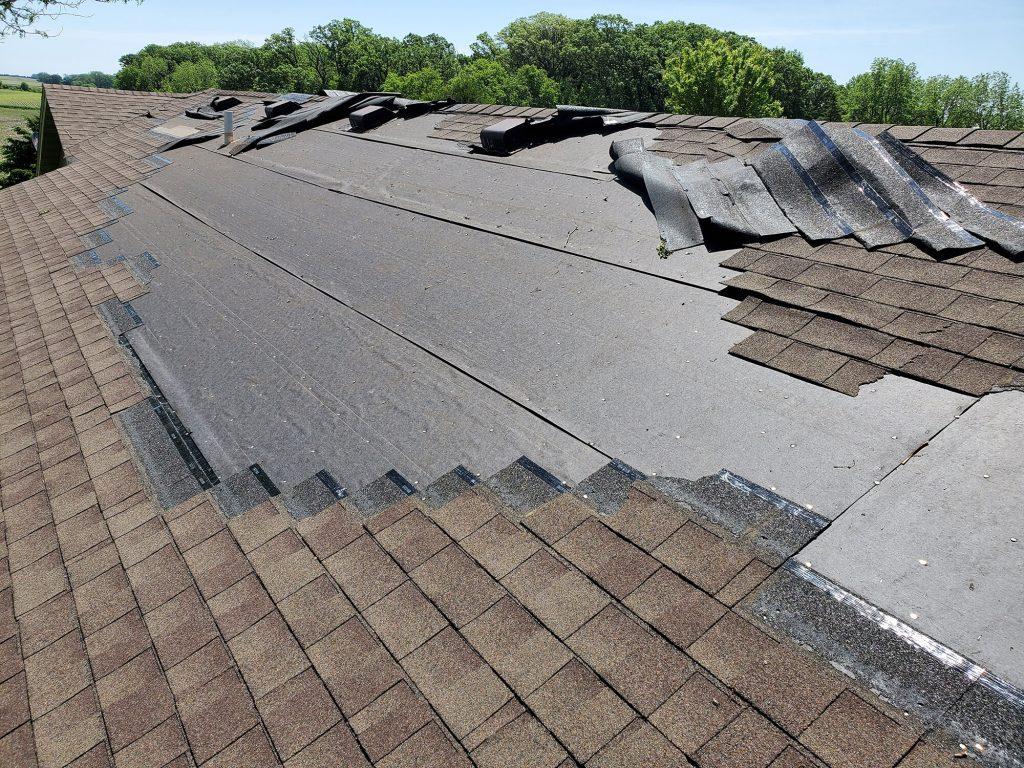A sudden storm, strong winds, or severe weather conditions can wreak havoc on your home’s roof. One common problem that homeowners often encounter is having shingles blown off their roof. It’s a frustrating situation that not only affects the aesthetics of your home but can also lead to water leaks and structural damage. In this article, we will explore the causes of shingles being blown off, the potential consequences, and what you should do if you find yourself in this situation.

Understanding the Causes of Shingles Being Blown Off
1. High Winds*
Strong winds are a primary cause of shingles being blown off a roof. When wind gusts reach a certain speed, they can create an upward force that lifts the shingles and breaks the seal that holds them in place.
2. Aging Shingles*
Over time, the adhesive that bonds shingles to the roof can weaken due to exposure to the elements. This degradation can make shingles more susceptible to being blown off during storms.
3. Poor Installation*
Shingles that were not installed correctly or with the appropriate materials may not have the necessary durability to withstand high winds. Insufficient sealing, incorrect nail placement, or the use of low-quality adhesive can all contribute to shingle loss.
Consequences of Shingles Being Blown Off
1. Water Damage*
One of the most immediate and serious consequences of missing shingles is the potential for water leaks. When shingles are blown off, it exposes the underlying roof structure to rain and moisture, which can lead to interior water damage.
2. Structural Damage*
Repeated exposure to the elements without proper shingle protection can cause structural damage to the roof deck and supporting rafters. This can result in more extensive and costly repairs.
3. Reduced Energy Efficiency*
Missing shingles can compromise the insulation and energy efficiency of your home. Heat loss and air leakage can occur, leading to increased energy bills.
What to Do When Shingles Are Blown Off
1. Inspect and Document*
After a storm or high-wind event, inspect your roof for missing shingles. Take clear photographs or videos of the damaged areas for documentation. This visual evidence can be valuable when dealing with insurance claims or repairs.
2. Temporary Repairs*
If you discover missing shingles, it’s essential to address the issue promptly. You can make temporary repairs by using roofing cement or sealant to cover exposed areas. This will help prevent immediate water intrusion.
3. Contact a Professional Roofer*
For a more permanent solution, contact a professional roofing contractor. They will assess the extent of the damage and provide recommendations for repairs or a full roof replacement if necessary.
4. Insurance Claim*
If the damage is extensive, contact your homeowner’s insurance company to file a claim. Provide them with the documentation you gathered and the assessment from the roofing contractor. Your insurance policy may cover the cost of repairs or replacement, depending on the circumstances.
Preventing Shingles from Being Blown Off
While you can’t control the weather, there are steps you can take to reduce the risk of shingles being blown off your roof:
1. Choose Quality Materials*
When installing a new roof or replacing damaged shingles, choose high-quality roofing materials and ensure they are installed correctly.
2. Regular Inspections*
Schedule regular roof inspections to identify and address any loose or damaged shingles before they become a more significant problem.
3. Wind-Resistant Shingles*
Consider using wind-resistant shingles that are designed to withstand strong winds. These shingles have enhanced sealing and are better equipped to stay in place during storms.
Conclusion
Shingles being blown off a roof is a common issue, especially in areas prone to severe weather. While it can be a frustrating and potentially costly problem, prompt action and proper repairs can mitigate the damage and prevent more extensive issues. Regular roof maintenance and choosing quality roofing materials can help reduce the risk of shingle loss and keep your home protected from the elements. If you ever find yourself dealing with missing shingles, don’t hesitate to seek professional assistance to ensure the integrity of your roof and the safety of your home.



Leave a Reply